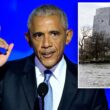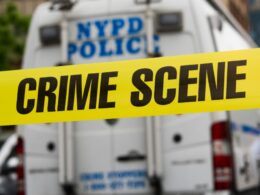The Triangle Shirtwaist Factory fire in the Greenwich Village neighborhood of Manhattan, on Saturday, March 25, 1911, was one of the deadliest fires in U.S. history. The fire resulted in the deaths of 146 garment workers, who perished due to the flames, smoke inhalation, or by falling or jumping to escape. The tragedy was made worse by the absence of sprinklers and locked exits, and the only available stairwell lacking smoke purge ventilation.
In response to the Shirtwaist Factory disaster, the New York City Fire Prevention Bureau was established, and new legislation was enacted, including changes to the NYC building code, aimed at improving safety standards to prevent such tragedies in the future.
More recently, on Jan. 9, 2022, a fire at the Twin Parks North West, Site 4, a high-rise apartment building in the Bronx, claimed the lives of 17 people, including eight children — all of whom died from smoke inhalation. This was the third worst residential fire in the U.S. in the past 40 years and the deadliest in New York since the Happy Land nightclub fire in 1990.
After each major fire where lives are lost, our city has historically taken action to improve the safety and security of its buildings and protect residents and workers. The Twin Parks fire has presented us with another historic moment, and one we must meet if we are to prevent the needless loss of life in the future.
For this reason, I strongly encourage the City Council to pass a life-saving bill, Int. 0088-2024, a commonsense measure which proposes mandatory periodic inspection and maintenance of smoke and fire dampers in residential buildings, ensuring that these life-saving systems remain functional and compliant with safety standards.
Key provisions to ensure the bill saves lives are requirements for certified professionals to inspect and test UL-rated (Underwriters Laboratories) fire, smoke, and combination dampers, as well as smoke purge systems. According to recognized standards, these inspections must occur one year after installation and then every four years, except in hospitals, where the interval is every six years.
This legislation would close gaps in building safety and guarantee ongoing compliance with critical fire protection measures, thereby ensuring commercial, industrial and public buildings in the city are safe for both occupants and first responders. Among those gaps are the fact that fire dampers, smoke dampers, and smoke control systems are not subject to inspection and testing requirements.
What is more, many inspection technicians in the field have revealed publicly that many dampers and smoke control systems do not operate properly. Indeed, in a review of more than 170,000 fire life safety dampers conducted in a 2021 University of Maryland study found that 53% needed repairs. The same study reviewed 740 smoke control system projects and found that 41% of existing building stairwells required repairs or adjustment.
If any building had less than half of their sprinklers, fire alarms, or fire extinguishers in working order, that building would be immediately evacuated. Why would we treat fire and smoke control systems any differently?
Remote inspection technology may offer convenience, but it is not always reliable, and false readings are often found. Nothing replaces the certainty of a trained professional conducting a thorough visual inspection.
Int. 0088 would bring New York in line with the approved standards of the National Fire Protection Association, which are already part of the New York City Fire Code. And in fact, many other states and municipalities have passed similar measures, including ensuring that technicians performing the work are qualified by an internationally recognized certification.
This bill was designed to prevent tragedies like those at the Triangle Shirtwaist Factory and Twin Parks North West, while also creating hundreds of local jobs in fire safety maintenance.
This effort would quite simply save lives. Families walking into schools, hospitals or apartment buildings deserve the peace of mind that comes with the knowledge that fire alarms, sprinklers, and other life safety systems are regularly tested. Protecting lives should never be treated as merely a checked box. It must be a commitment backed up by accountability and professionalism. Pass this life-saving measure.
Cassano, a senior managing director of Pitta Bishop & Del Giorno, LLC, served as the 32nd New York City fire commissioner from 2010 to 2014.








